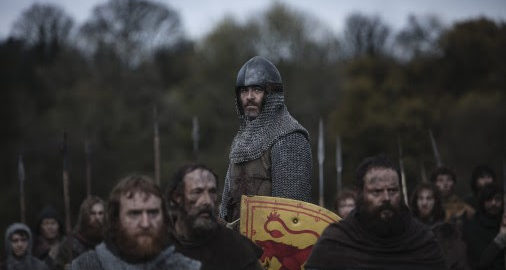
December 15 (TravelAndy): You have heard the legend of Robert the Bruce and the spider where the king gets inspired by the tiny arachnid’s persistence.
Scotland’s national tourism organisation has launched an online interactive map highlighting the the historic sites linked with Robert the Bruce and the Scottish Wars of Independence.
Robert the Bruce, hailed as one of the greatest monarchs of Scotland, led the country to its independence from the English crown in the early 14th century. The map is an attempt to aid travellers in unravelling the history behind the King of Scots by following in his footsteps.
The interactive journey takes visitors on a tour across the country, from Robert the Bruce’s homeland, Annandale and Galloway, to the breathtaking landscapes of Loch Lomond and Glen Coe. Medieval abbeys, battlefields, historic buildings, ruins, and castles — all come alive to narrate tales of the Scottish freedom struggle.
Some of the places of great historical value comprise:
- Dumfries — by the River Nith, where The Bruce killed his rival Sor John Comyn inside the Greyfriars Kirk, commencing his bid for the Scottish throne.
- Loch Doon Castle — located in Ayrshire, it was built either by Robert the Bruce or his father.
- Loudoun Hill — site of the Battle of Loudoun Hill fought in 1307, and Robert the Bruce’s first victory against England.
- Bruce’s Stone — one of the most memorable monuments to The Bruce, the huge granite boulder in Galloway Forest Park acted as a resting support for the King after the Battle of Glentrool in 1307.
- St Andrews Cathedral — once the major centre of Roman Catholic worship in Scotland, it is also the site of the King of Scots’ first parliament in 1309.
- Scone Palace — known as the ancient crowing place of Scottish kings, including Robert the Bruce, and the first King of Scots, Kenneth MacAlpin.
- Bannockburn — site of the battlefield where one of Scotland’s most decisive combats was won, in 1314. Bruce’s army, though fewer in number, defeated King Edward II’s men.
- Stirling Castle — one of the country’s most most historically significant spots, Robert the Bruce reclaimed the castle after winning the Battle of Bannockburn.
The VisitScotland guide offers a choice between a map and a list of places, both leading to more information about each of the sites. The map has several filters that visitors can opt from — one can explore in terms of region, or type of place, or a combination of both.
For example, the Edinburgh and the South East filter throws up every place of significance in the area:
- The Edinburgh Castle, besieged and destroyed by Bruce in 1314
- Holyrood Abbey, the 12th century ruins where the treaty recognising Bruce as the rightful King of Scots was signed in 1328
- Melrose Abbey, near the Scottish borders where Bruce’s heart is buried
- Linlithgow Palace, by the Linlithgow Loch, birthplace of Mary Queen of Scots and her father James V, that was snatched away by the English King Edward I, but recaptured by The Bruce’s followers on 1313
- The small town of Berwick-Upon-Tweed near the Anglo-Scots borders that changed hands fourteen times between the two sides during the 13th and 14th century Wars of Scottish Independence.
The areas to choose from include:
- Edinburgh and the South East
- Glasgow and the South West
- Highlands and Islands
- Loch Lomond, Argyll and Stirlingshire
- Moray and Aberdeenshire
- Tayside and Fife
Apart from the legendary trail of Robert the Bruce, the map also features the locations of ‘Outlaw King’, a Netflix film based on Bruce, a Scottish national hero, directed by David Mackenzie.





You must log in to post a comment.